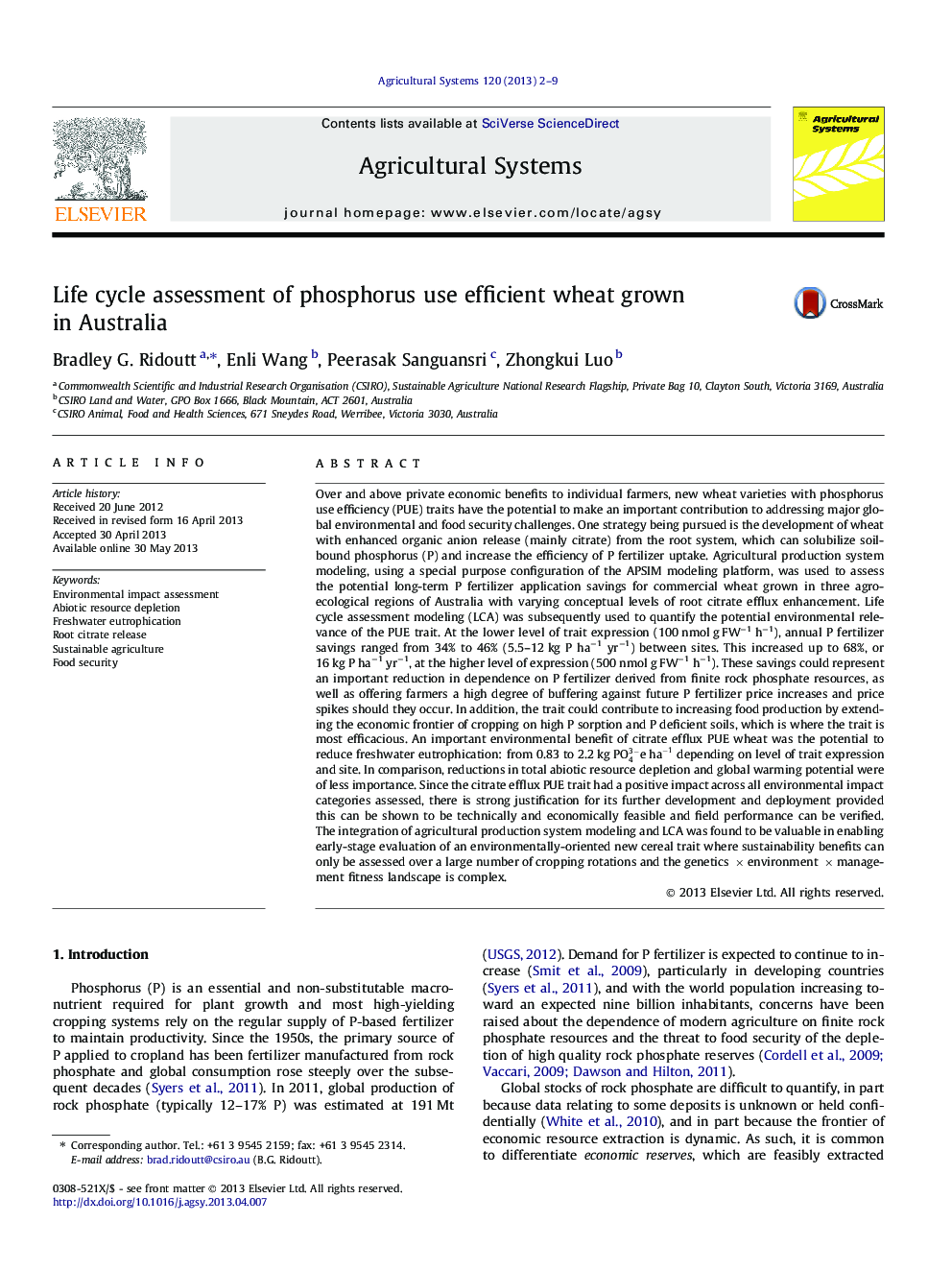| کد مقاله | کد نشریه | سال انتشار | مقاله انگلیسی | نسخه تمام متن |
|---|---|---|---|---|
| 6368673 | 1623250 | 2013 | 8 صفحه PDF | دانلود رایگان |
- We model the long-term performance of wheat with a phosphorus use efficiency trait.
- We examine potential changes in P depletion, eutrophication and carbon footprint.
- Trait performance depends on local soil, climate and management practices.
- Life cycle assessment can guide development of new environmental traits in wheat.
Over and above private economic benefits to individual farmers, new wheat varieties with phosphorus use efficiency (PUE) traits have the potential to make an important contribution to addressing major global environmental and food security challenges. One strategy being pursued is the development of wheat with enhanced organic anion release (mainly citrate) from the root system, which can solubilize soil-bound phosphorus (P) and increase the efficiency of P fertilizer uptake. Agricultural production system modeling, using a special purpose configuration of the APSIM modeling platform, was used to assess the potential long-term P fertilizer application savings for commercial wheat grown in three agro-ecological regions of Australia with varying conceptual levels of root citrate efflux enhancement. Life cycle assessment modeling (LCA) was subsequently used to quantify the potential environmental relevance of the PUE trait. At the lower level of trait expression (100 nmol g FWâ1 hâ1), annual P fertilizer savings ranged from 34% to 46% (5.5-12 kg P haâ1 yrâ1) between sites. This increased up to 68%, or 16 kg P haâ1 yrâ1, at the higher level of expression (500 nmol g FWâ1 hâ1). These savings could represent an important reduction in dependence on P fertilizer derived from finite rock phosphate resources, as well as offering farmers a high degree of buffering against future P fertilizer price increases and price spikes should they occur. In addition, the trait could contribute to increasing food production by extending the economic frontier of cropping on high P sorption and P deficient soils, which is where the trait is most efficacious. An important environmental benefit of citrate efflux PUE wheat was the potential to reduce freshwater eutrophication: from 0.83 to 2.2 kg PO43-eha-1 depending on level of trait expression and site. In comparison, reductions in total abiotic resource depletion and global warming potential were of less importance. Since the citrate efflux PUE trait had a positive impact across all environmental impact categories assessed, there is strong justification for its further development and deployment provided this can be shown to be technically and economically feasible and field performance can be verified. The integration of agricultural production system modeling and LCA was found to be valuable in enabling early-stage evaluation of an environmentally-oriented new cereal trait where sustainability benefits can only be assessed over a large number of cropping rotations and the genetics àenvironment àmanagement fitness landscape is complex.
Journal: Agricultural Systems - Volume 120, September 2013, Pages 2-9
